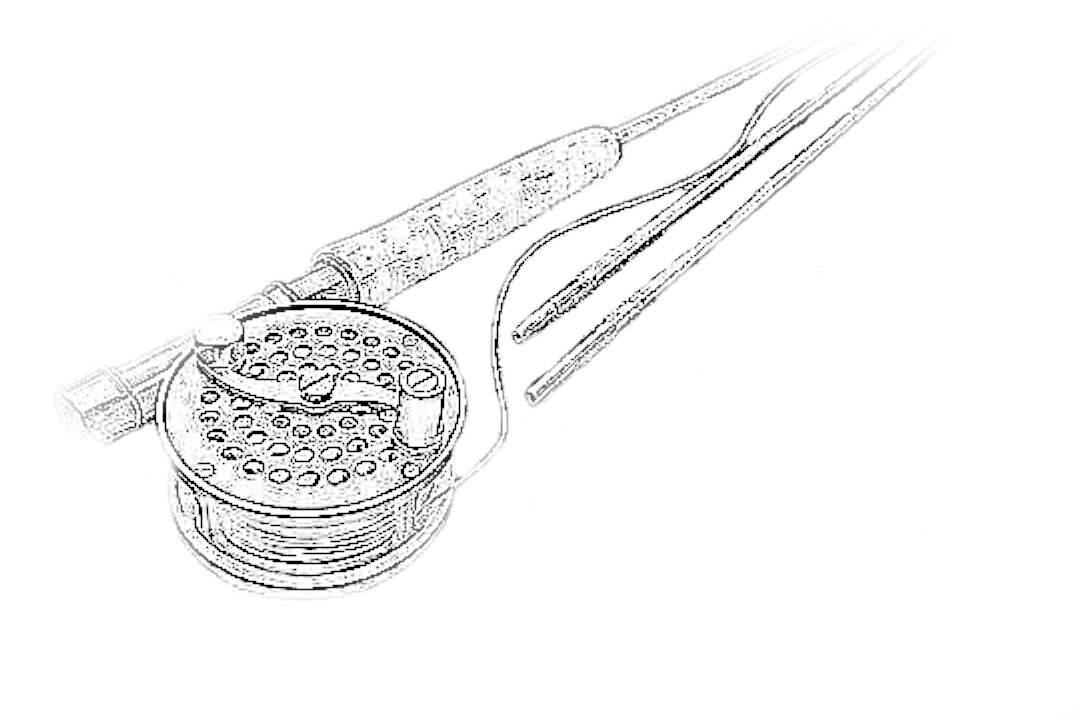
F.A.Q.
Fly Fishing Or Spin Casting?
Methods
To Fly Fish or Spin Cast?
Fly Fishing Or Spin Casting?
Fly or Spin Casting: Methods and Means for Your Alaskan Adventure
Alright, let's talk about how we're going to get those fish on the line! Both fly fishing and spin casting equipment are absolutely appropriate for the rivers we float, and honestly, either method can be incredibly successful. We welcome all anglers on our trips, and if you're not a fly fisher, no worries at all – we can even offer some basic fly fishing instruction if you're interested in learning more while you're here.
Gear Rentals & What We Provide
For those who might not have all the gear, we've got you covered! We now have available 10wt, 8wt, and 6wt fly rod and reel packages from TFO for rent. Please make sure to inquire when booking your trip if you need rental rods, as quantities are limited. If spin fishing rods and reels are what you need, we have those available at no charge – just bring your own lures! We also usually have a limited number of spares on every trip, just in case something unexpected happens to your equipment.
Spin or Bait Casting Outfits
If spin or bait casting outfits are your forte, a medium-weight outfit similar to what you'd use for steelhead is perfectly appropriate. A great all-around setup would be a medium action rod that can handle 10 to 15-pound line and lure weights from 3/8 to 3/4 ounce. For lures, Blue Fox Pixees (we're partial to the chrome and red or pink variety), Mepps spinners, and T-Spoons are perennial favorites, and you can find these at most major outdoors shops. For those tackle-busting King Salmon, however, you'll definitely need to upsize a bit, using a heavy action rod that can handle at least 20-pound line – some anglers even prefer 30-pound for these beasts! And don't forget an ultra-light combo that can handle small spinners; it's a great idea to have along for targeting grayling, dollies, and smaller char and rainbows.
Hooks: Single & Barbless is Best!
We strongly discourage any use of treble hooks and request that you replace these with barbless single hooks one or two sizes larger before your trip. This isn't just for the well-being of the fish, which we care deeply about, but it's also a requirement on some of the waters we float. Plus, this practice actually assures more solid hookups and more fish safely landed – it's a win-win!
Bringing Spares
A word of advice from our many years on the river: we highly recommend that you bring at least two rods and reels along, with extra spools and lines or consider a line system such as RIO's InTouch VersiTip II system, an interchangeable tip fly line designed for the traveling angler. If something should happen to your primary setup, you'll have spares ready to go and won't miss a minute of fishing.
Fly Fishing Rods & Reels
For King Salmon, a 9 to 12-weight rod can be used, but the most important thing is that the rod you choose has plenty of backbone to aid in landing these 20 to 60-pound fish! The preferred rod among our guests is often a 9 to 9 ½ foot 10-weight rod that's capable of casting heavy, wind-resistant flies. For lines, sink tips like a Tenny T-400, SA Wet Tip V, or fast-sinking shooting heads are excellent for getting your flies down fast to the river bottom, where most king-catching happens. You should also include an appropriate floating line for shallow water situations.
For Chums, Coho, Sockeye Salmon, and big Rainbows, a 7 to 9-weight rod, typically 9½ feet long, is ideal, with the most popular choice being a 9-foot 8-weight rod. Your reels for these should hold at least 150 yards of 20-pound backing, with floating and sinking tip lines to match the rod you choose.
For Pink Salmon, Arctic Char, Grayling, and smaller Rainbows, the popular choice is often a 5-weight rod, 8 to 9 feet long, with 100 yards of backing, though a 4 or 6-weight will work beautifully too.
When it comes to fly reels, there are two schools of thought: with or without a drag. Which system you choose is a personal decision based on how you perceive the fishing experience. However, we strongly suggest that the reel you bring be of sturdy construction, because it's going to get a serious workout out here! A spare spool is always advisable. Ultimately, a well-constructed, dependable reel with a smooth drag system is a must. If you have to bring just one reel, make sure it can hold at least 200 yards of 20 or 30-pound backing, and ideally, have an exposed rim so you can palm the spool as that fish of a lifetime takes you down the river!



